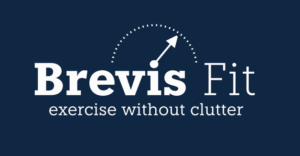Introduction
Strength training involves using weights or resistance to fatigue muscles. This leads to improved muscle quality and total body fitness. Most frequently, strength training is linked with building huge muscles. While that is a benefit, it can lead to other improvements that are not only related to the aesthetics. In this article, we’ll explore the benefits of strength training and uncover the other health benefits that it can produce.
What is strength training?
Strength training is a form of physical activity focused on increasing muscular strength. Muscular strength is a marker of force our muscles can generate. And this is affected by multiple factors, such as muscle fiber size, oxygen use, and neuronal efficiency. Therefore, focusing on increasing muscular strength leads to improved endurance, oxygen use, cardio proficiency, basal metabolic rate and neural control. With strength training, all of these elements increase to a certain (but varying) degree. All of these properties, together, form the concept of muscle quality.
Since increasing strength requires improvement of all of these properties mentioned above, it is no wonder that physical strength alone, has been established as the best predictor of longevity [1], [2]. A stronger muscle namely requires all of the involved aspects to be efficient and well functioning. This makes strength training a potent activity, that most efficiently enhances your (movement-related) life quality [1], [2].
Strength training is the fountain of youth and health.
Strength training improves many aspects of health, including increased muscle mass and strength, improved bone density, and reduced risk of chronic diseases such as diabetes, heart disease, and obesity [3]–[5]. It can also enhance balance and coordination, which lowers the chance of falls and accidents. This is especially helpful to older adults. Strength exercise can also help with weight loss. And it also improves mental health and well-being. Note that it is a must to remember that strength training should be done with extreme caution. Injury, pain, or discomfort should not result from strength exercise. The strength gained with injury risk defeats its goal.
In this aspect, (proper) Exercise is the safest and the preferred strength-building physical activity. Other activities, such as weight lifting, cross-fit, or calisthenics, enhance strength building. But can result in severe pain and injuries [6], due to the uncontrolled and fast movements required to achieve the external goal of these activites. For instance in weight lifting we focus on overcoming a certain resistance, in cross-fit we need to complete a certain physical challenge like climbing up a rope, etc.
On the contrary, Exercise does not focus on external goals. Exercise is focused on deep muscular fatigue, since it is muscular fatigue that stimulates the body to form new adaptations[7].

How strength training can improve bone density.
Strength training is critical for improving bone density. The elderly are more at risk of osteoporosis due to the process of demineralization, i.e. loss of minerals. Lifting weights or performing resistance workouts puts stress on your bones, increasing the formation of new bone tissue. [4], [8]. But, it needs a higher resistance to promote increases in bone density. Heavier loads can prevent bone loss, which can prevent osteoporosis-related bone fractures. For example, statistics state that as much as 90% of hip fractures come from osteoporosis [9], [10]. Stronger muscles can also protect osteoporosis patients by alleviating bone stress, which helps prevent falls due to increased strength and reduced fatigue [11]. Finally, strength training can improve balance and coordination. This reduces the risk of falls and injuries, which many times lead to bone fractures.

The role of strength training in weight management.
Strength training can also play a significant role in weight management. While cardio exercises like running and cycling burn calories during the workout, strength training can help increase your metabolism and burn calories even after your workout. Recovering and adapting from the exercise is a long process, lasting a few days. Thus, we observe an increased heart rate up to 48hrs post-workout. Strength training relies on medium to heavy resistance to efficiently fatigue our muscles. Such mechanical stress uses ATP and glycogen as the primary energy resources. The depletion and recovery rate is set by genetics and our diet.
Another side effect of strength training can be muscle mass growth. This increases our glycogen reserve and total metabolic rate due to newly created muscle tissue. A larger glycogen reserve helps you to store access calories inside your muscles. This energy is stored in the form of sugars. In that regard, the more muscle mass you have, the more calories your body will burn and store as non-fat tissues, due to increased metabolism and higher requirements for glycogen stores. In that regard, strength training has a positive effect on your body composition, but adherence to a health diet is still encouraged.

Tips for getting started with strength training.
If you’re new to strength training, focus on the correct exercise form first. We recommend focusing on simple movements and emphasizing proper exercise behavior:
- Proper body posture
- Relaxed and open-mouth breading
- Mental focus on targeted muscles
Begin with body weight exercises like push-ups and squats, or ideally, try out static contractions. Introduce weights and resistance bands as you become more confident. You can also stick with body weight and focus on increasing the intensity, by changing the body positions. Giving your muscles time to rest and recover between workouts is also essential. Thus, aim to strength train 2-3 times per week with rest days between, at the beginning.
A higher workout frequency is especially beneficial for beginners, needing more time to learn the proper form. Once you become more proficient at exercising, or you are exercising with an exercise instructor, you can reduce your workout frequency to 1 workout every 4 – 7 days [14].

Conclusions
Strength training is an essential component of health and fitness. It promotes a lot of benefits, such as muscle growth, higher bone density, decreased risk of chronic diseases, and weight management. It improves balance and coordination and decreases falls, especially in older adults. Yet, safety should always be a top priority. It should emphasize proper exercise forms to prevent injury. If you’re new to strength training, start with simple movements. Then you can focus on the correct forms. You can add weights or resistance bands to your regimen after you master the basics. Add strength training to your fitness regimen and make it a habit. You may live a healthier, more active, and more meaningful life.
Literature
[1] S. Knez, “The Purpose Of Exercise,” BrevisFit, Dec. 12, 2020. https://brevis-fit.com/the-purpose-of-exercise/ (accessed Apr. 24, 2021).
[2] S. Knez, “Understand the basic principles that define Exercise,” BrevisFit, Jan. 01, 2021. https://brevis-fit.com/defining-exercise-theoretical-concepts/ (accessed Apr. 21, 2023).
[3] S. Knez, “Exercise Progress Part 1: Our Guide For Long Term Success – BrevisFit.” https://brevis-fit.com/exercise-progress-p1/ (accessed Dec. 06, 2021).
[4] S. Knez, “Exercise Progress Part 2: Changes in Body Shape,” BrevisFit, Dec. 03, 2021. https://brevis-fit.com/exercise-progress-part-2-changes-in-body-shape/ (accessed Dec. 08, 2021).
[5] S. Knez, “Exercise progress part 3: Muscular Strength,” BrevisFit, Feb. 05, 2022. https://brevis-fit.com/exercise-progress-part-3-muscular-strength/ (accessed Apr. 01, 2022).
[6] S. Knez, “Defining Exercise: The Intensity – Safety Quadrant,” BrevisFit, Jan. 18, 2021. https://brevis-fit.com/the-intensity-safety-quadrant/ (accessed May 30, 2021).
[7] S. Knez, “Exercise form – Guide for Safety and Efficiency,” BrevisFit, May 07, 2022. https://brevis-fit.com/exercise-form-guide-for-safety-and-efficiency/ (accessed May 09, 2022).
[8] M. G. Benedetti, G. Furlini, A. Zati, and G. Letizia Mauro, “The Effectiveness of Physical Exercise on Bone Density in Osteoporotic Patients,” BioMed Res. Int., vol. 2018, p. e4840531, Dec. 2018, doi: 10.1155/2018/4840531.
[9] A. Singer et al., “Burden of Illness for Osteoporotic Fractures Compared With Other Serious Diseases Among Postmenopausal Women in the United States,” Mayo Clin. Proc., vol. 90, no. 1, pp. 53–62, Jan. 2015, doi: 10.1016/j.mayocp.2014.09.011.
[10] C. M. Klotzbuecher, P. D. Ross, P. B. Landsman, T. A. Abbott III, and M. Berger, “Patients with Prior Fractures Have an Increased Risk of Future Fractures: A Summary of the Literature and Statistical Synthesis,” J. Bone Miner. Res., vol. 15, no. 4, pp. 721–739, 2000, doi: 10.1359/jbmr.2000.15.4.721.
[11] P. Srikanthan et al., “Insulin Resistance and Bone Strength: Findings From the Study of Midlife in the United States,” J. Bone Miner. Res., vol. 29, no. 4, pp. 796–803, 2014, doi: 10.1002/jbmr.2083.
[12] M. A. Tarnopolsky, S. A. Atkinson, J. D. MacDougall, A. Chesley, S. Phillips, and H. P. Schwarcz, “Evaluation of protein requirements for trained strength athletes,” J. Appl. Physiol., vol. 73, no. 5, pp. 1986–1995, Nov. 1992, doi: 10.1152/jappl.1992.73.5.1986.
[13] W. M. Sherman, D. L. Costill, W. J. Fink, and J. M. Miller, “Effect of Exercise-Diet Manipulation on Muscle Glycogen and Its Subsequent Utilization During Performance*,” Int. J. Sports Med., vol. 02, no. 2, pp. 114–118, May 1981, doi: 10.1055/s-2008-1034594.
[14] S. Knez, “5 Reasons Online Personal Training saves you time and money,” BrevisFit, Sep. 03, 2022. https://brevis-fit.com/5-reasons-online-personal-training-saves-you-time-and-money/ (accessed Sep. 11, 2022).

